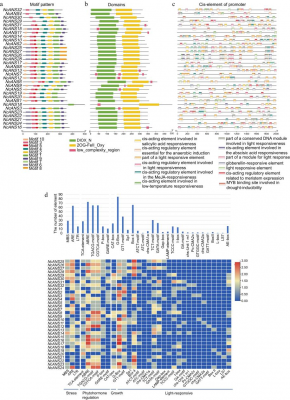Introduction
Diabetes is a chronic metabolic disorder characterized by elevated blood glucose levels.1–3 When blood glucose is not effectively controlled for a long period, it can lead to a variety of complications, among which DFU is one of the serious and common complications.4–6 Hyperglycemia contributes to DFUs through several mechanisms: first, long-term hyperglycemia induces neuropathy, leading to loss of protective sensation in the foot, making patients insensitive to trauma or pressure, and thus susceptible to foot injuries; second, hyperglycemia also leads to vasculopathy, which reduces the blood supply to the foot and affects wound healing. In addition, hyperglycemia also weakens immune function and increases the risk of infection, further aggravating ulcer formation and development.7–9 These factors work together to greatly affect the quality of life of patients. About 6.3% of the world’s diabetic population suffers from DFU, and more than half of all diabetic patients are at risk of DFU. According to statistics, the global healthcare expenditure on DFU treatment reaches up to $40 billion per year, putting enormous economic pressure on national healthcare systems.10,11 Currently, the treatment of DFU relies on traditional approaches such as glycemic control, anti-infective therapy, topical care, and surgery.12,13 However, these treatment modalities often have limited effectiveness, and there is an urgent need to develop and explore safe and effective therapeutic strategies.
|
Table 1 The Mechanism of Action and Experimental Model of Mesenchymal Stem Cell Exosomes in the Treatment of Diabetic Foot Ulcers
|
 |
Table 2 Case Studies of Stem Cell Exosomes from Different Sources in the Treatment of Diabetic Foot Ulcers
|
MSC treatment of DFU has achieved significant results in preclinical studies and clinical trials, but has not been widely used in routine clinical treatment.14–16 Numerous studies have shown that stem cells promote the healing process of DFU through multiple mechanisms, including promoting wound healing, enhancing angiogenesis, and inhibiting inflammation.17,18 However, the exact mechanism of stem cell therapy for DFU has not been fully clarified. It has been found that the therapeutic effect of stem cells is not only through their differentiation potential but also through their paracrine effects. Paracrine action refers to the secretion of bioactive factors by stem cells, such as cytokines, microRNA exosomes, etc. These released substances can promote tissue repair and regeneration by regulating the local microenvironment.19–21 Among the substances released by stem cells, exosomes, as a key component, play an important role in promoting cell migration, proliferation, and differentiation.22
In recent years, Mesenchymal Stem Cell-derived Exosomes (MSC-Exos) have become an important research direction for DFU therapy due to their great potential in tissue repair and regeneration.23–25 It has been shown that exosomes deliver biological signals and regulate cellular functions through interactions with target cells, which in turn promote wound healing.26–28 Therefore, MSC-Exos is considered a promising treatment for DFU.
This review focuses on the role and mechanism of exosomes from different sources of stem cells in improving diabetic wound healing and enhancing the effectiveness of stem cell exosomes in treating DFUs from the perspective of tissue engineering to provide more promising candidates and ideas for the treatment of diabetic wound healing.
Biological Properties of Stem Cell Exosomes
Sources and Mechanisms of Secretion
Exosomes are nanovesicles with a diameter of about 30–150 nm.29–31 It was first discovered in 1983 when Harding et al32 were studying erythrocytes and stumbled upon the discovery that the cells secreted tiny vesicles, which were not simply cellular waste products, but were formed by periplasmic ectasia and had specific biological functions. It was not until 1996 that the concept of exosomes was widely recognized and clarified by the scientific community. Exosomes contain many biologically active substances, such as proteins, RNA, lipids, etc, which can regulate target cells through intercellular transduction.33,34 In addition, a distinctive feature of stem cell exosomes is their ability to carry biomolecules from source stem cells and deliver these substances to target cells, thus exerting a variety of biological effects, such as promoting tissue repair, anti-inflammation, and immune modulation.35 The formation of exosomes begins with the endocytosis of cell membranes to form endosomes, which contain many extracellular substances inside. During maturation, endosomes are transformed into multivesicular bodies, in which small endosomes are encapsulated within large vesicles. The multivesicular body has multiple small vesicle-like vesicles, which contain many exosomes that will be secreted. When the multivesicular body matures, it fuses with the cell membrane and releases the inner vesicles outside the cell, ie, exosomes36–39 (see Figure 1). After formation, exosomes can be taken up by target cells and can participate in intercellular communication through receptor-ligand interaction, direct membrane fusion, and endocytosis.40
 |
Figure 1 Biogenesis of exosomes.
|
In characterizing and analyzing MSC-Exos, we usually use the following techniques: transmission electron microscopy (TEM) for observing the morphological features of exosomes and confirming their typical cup structure; nanoparticle tracking analysis (NTA) for determining the size distribution and concentration of exosomes; and protein blotting (Western blotting) for confirming the identity and purity of exosome-specific proteins by identifying them to confirm their identity and purity.41,42
Biological Functions
Stem cell exosomes are involved in intercellular communication and signaling regulation.43 Stem cell exosomes can regulate the function of target cells by carrying bioinformatic substances that transmit information between cells. They also selectively deliver signaling molecules to target cells by binding to specific receptors.44,45 In addition, RNA molecules in exosomes can be transcribed and expressed in target cells, thereby altering cellular biological behaviors such as proliferation, migration, and differentiation.20,46,47 Stem cell exosomes can also promote tissue repair and regeneration.22,48,49 They can promote cell proliferation, migration, and tissue repair, especially in the healing process of chronic wounds such as diabetic wounds. Secondly, stem cell exosomes promote neoangiogenesis and improve the repair and regeneration of ischemic tissues by regulating endothelial cell proliferation, migration, and lumen formation.50–52 In addition, stem cell exosomes have anti-inflammatory effects, which can reduce the local inflammatory response, regulate the function of immune cells, inhibit the secretion of pro-inflammatory cytokines, and avoid excessive inflammatory response at the wound.53,54 In addition, engineered stem cell exosomes can be used for drug delivery and gene therapy.55,56 Exosomes can carry small-molecule drugs, and their natural biocompatibility and targeting properties make them ideal drug carriers. In addition, stem cell exosomes repair or replace specific genes by loading molecules such as mRNA, siRNA, shRNA, etc, to treat diseases associated with genetic defects.57 In addition, stem cell exosomes have antioxidant effects.58 Exosomes released from stem cells are enriched with a variety of antioxidant enzymes, including superoxide dismutase, catalase, etc, which can scavenge reactive oxygen species, thus reducing cellular damage caused by oxidative stress.59,60
Mechanisms of Stem Cell Exosomes in the Treatment of Diabetic Foot Wounds
Inflammation Regulation
Excessive inflammatory response of the wound is a major cause of DFU, and abnormal macrophage polarization and cytokine overexpression can lead to a persistent inflammatory state of the wound and may also trigger secondary peripheral tissue injury.8,61 Therefore, regulation of wound inflammation is one of the important targets for DFU therapy. In recent years, more and more studies have proven that many MSC-Exos can reduce the inflammatory response and promote wound healing62,63 MSC-Exos as a potential therapeutic tool provides new hope for the clinical treatment of DFU.
Inhibition of Inflammatory Factors
MSC-Exos can regulate the expression of inflammatory factors by modulating the local immune response of the wound, thus inhibiting excessive inflammatory response. Yan et al64 showed that under hyperglycemic conditions, exosomes released from human umbilical cord mesenchymal stem cells significantly reduced the expression of inflammatory factors such as IL-6, 1L-1β, and TNF-α, thus avoiding excessive inflammatory response. In addition, Wang et al65 found that adipocyte-derived MSC-Exos could attenuate the inflammatory response by inhibiting the release of IL-27. Taken together, these studies suggest that exosomes isolated from multiple stem cell types can promote wound healing by regulating inflammatory mediators that play a key role in different stages of wound healing.
Macrophage Polarization Induction
MSC-Exos also regulates the phagocyte polarization state and promotes the conversion of M1-type macrophages to M2-type. Macrophages consist of two polarization states, M1 macrophages and M2 macrophages.66 M1 macrophages are generally found in the early stage of the inflammatory response and play a pro-inflammatory role.67 M2 macrophages, on the other hand, are generally found in the later stages of the inflammatory response and play an anti-inflammatory and pro-wound healing role.67 However, in DFU wounds, hyperglycemia continues to stimulate macrophages to secrete large amounts of pro-inflammatory factors, which leads to the persistence of the M1 phenotype in macrophages at the site of rupture, preventing further wound healing.68,69 Therefore, promoting the conversion of M1-type macrophages to M2-type may be an effective option for the treatment of DFU wounds.
Zhu et al70 showed that adipose-derived MSC-Exos polarized macrophages to the M2 phenotype, which enhanced angiogenesis. He et al71 showed that bone marrow-derived MSC-Exos induced macrophage conversion to the M2 phenotype, attenuated inflammation, and promoted wound healing by targeting the PKNOX1 gene via transporter miR-223. Chamberlain et al72 found that bone marrow-derived MSC-Exos promoted macrophage conversion to M2 type and exerted inflammation modulation and accelerated tendon healing in a mouse tendon injury model. In addition, Li et al73 showed that adipose-derived MSC-Exos inhibited the macrophage migration inhibitory factor, MIF, and promoted the conversion of M1-type macrophages to M2-type macrophages via miR-451a. Thus, MSC-Exos plays an important immunomodulatory role in diabetic wound healing by regulating the polarization state of macrophages and promoting the conversion of M1-type macrophages to M2-type.
Oxidative Stress Regulation
MSC-Exos reduces oxidative stress, relieves wound inflammation, and accelerates the healing process. Yan et al64 showed that human umbilical cord-derived MSC-Exos inhibits the expression of two proteins, NOX1 and NOX, in human umbilical vein endothelial cells, which reduces oxidative stress. Xue et al74 demonstrated that adipose-derived MSC-Exos promoted the expression of Nrf2 protein, which inhibited the expression of Nrf2 proteins in human keratinocytes, fibroblasts, and human umbilical vein endothelial cells, thereby reducing the expression of oxidative stress-related proteins and reducing oxidative stress. Zhang et al75 showed that adipose-derived MSC-Exos could reduce ROS accumulation, attenuate oxidative stress induced by hyperglycemia, and mitigate inflammatory responses by modulating the SIRT3/SOD2 axis, thereby accelerating wound healing in a diabetes model. In addition, Ren et al76 found that adipose-derived MSC-Exos could reduce oxidative stress by releasing eHSP90 protein, and it could lead to accelerated diabetic wound healing.
MSC-Exos has multiple mechanisms in the inflammatory regulation of DFU, including inflammatory factor inhibition, macrophage polarization induction, and oxidative stress regulation. Under the combined effect of these mechanisms, inflammatory overreaction can be avoided and wound healing can be promoted, as well as providing new ideas for the treatment of DFU.
Promote Cell Proliferation, Migration, and Angiogenesis
Promoting cell proliferation and migration, and angiogenesis is crucial in the comprehensive treatment of DFU wounds. Diabetic foot wounds are often associated with chronic inflammation, inadequate blood supply, and impaired cellular function; therefore, promoting the proliferation and migration of fibroblasts and other cells from diabetic patients can help accelerate the healing process.77,78 Cell proliferation and migration can promote wound epithelialization, collagen synthesis, and tissue repair, and reduce wound exposure time, thus reducing the risk of infection and complications.79,80 Meanwhile, angiogenesis is a key component in wound healing because DFU wounds often lack sufficient oxygen and nutrients due to impaired microcirculation.81–83 Therefore, by promoting new angiogenesis, the local blood supply can be improved to provide the necessary nutrients and oxygen for wound repair, thus accelerating healing and reducing the risk of amputation.
Li et al84 found that the proliferation and migration of fibroblasts play key roles in wound repair, and MSC-Exos plays a crucial role in stimulating these cellular activities. Li et al85 observed by wound scratch assay that adipose-derived MSC-Exos could be taken up by fibroblasts and significantly promoted cell migration in a dose-dependent manner after internalization. Specifically, the migration rate of MSC-Exos-treated fibroblasts increased by approximately 40% (p < 0.01) after 24 hours compared with the control group, suggesting a significant promoting effect of MSC-Exos. In addition, MSC-Exos promoted collagen synthesis and upregulated related gene expression. In a mouse skin incision model, adipose-derived MSC-Exos could be recruited to the wound and significantly accelerated skin wound healing. Xue et al74 reported that administration of adipose-derived MSC-Exos to a diabetic rat model resulted in increased levels of angiogenic and growth factor expression in wound beds, and led to a significant reduction in the size of foot wound ulcers in rats. Ma et al86 showed that injection of adipose-derived MSC-Exos into rats with total skin defects was found to be taken up by fibroblasts and human umbilical vein endothelial cells, and could promote human venous endothelial cell production and fibroblast proliferation and migration.
Promoting Nerve Regeneration
Patients with diabetes are often associated with neuropathy.87,88 Neuropathy may result in sensory loss and neuropathic pain, which together may lead to uneven loading of the foot, increased pressure, and subcutaneous edema, which can increase the risk of falls and foot ulcers89 In addition, the nervous system plays an important role in DFU wound healing.90 In the treatment of DFU wounds, the promotion of nerve regeneration may favor the healing of ulcer wounds.
Fan et al91 developed an engineered MSC-Exos carrying miR-146, which was administered systemically to a diabetic mouse model and found to be therapeutically effective for nerve restoration, with significant increases and decreases in nerve conduction velocities as well as thermal and mechanical stimulation thresholds, respectively. Nakano et al92 found that in vivo injection of bone marrow-derived MSC-Exos repaired damaged neurons and glial cells. In addition, Singh et al93 reported that bone marrow-derived MSC-Exos was fused with polypyrrole nanoparticles containing liposomes, which were injected into the muscles of rats with a diabetic neuropathy model, and found that nerve conduction velocity and compound muscle action potentials were normalized in the injected rats. In addition, Wang et al94 developed a miR-218-carrying adipose-derived MSC-Exos, and treatment utilizing miR-218-carrying MSC-Exos in combination with engineered scaffolds promotes the regeneration of sciatic nerves in a sciatic nerve injury model.
The nervous system is critical for DFU healing, and promoting nerve regeneration facilitates diabetic wound healing. As all of the above studies have demonstrated, engineered MSC-Exos carrying specific miRNAs or in combination with other materials can significantly promote nerve repair and functional recovery in diabetic model animals, providing a new strategy for DFU treatment.
Other
Accumulation of advanced glycosylation end products (AGEs) in DFUs triggers oxidative stress and inflammatory responses, inhibits cell proliferation and migration, and thus impedes diabetic wound healing.95,96 Tang et al97 treated rat chondrocytes with AGEs to induce cellular damage. Subsequent treatment of damaged chondrocytes with bone marrow-derived MSC-Exos revealed that their exosomes abrogated AGEs-mediated chondrocyte apoptosis. Therefore, treatment targeting AGEs is expected to promote wound repair and provide new ideas for DFU treatment. In addition, bacterial biofilms are widely present in DFUs, which are formed by the encapsulation of a polysaccharide matrix secreted by bacteria and are highly drug-resistant and immune-resistant, significantly increasing the difficulty of treatment. Bacteria in biofilms may release inflammatory factors that trigger chronic inflammation and inhibit cell proliferation and migration.98,99 At the same time, the presence of biofilm may also exacerbate local hypoxia, further affecting tissue repair. Therefore, the elimination of bacterial biofilm is a key aspect of DFU treatment. Bakadia et al100 developed a novel double cross-linked hydrogel based on silk proteins, which contains MSC-Exos, and used it to treat diabetic wounds, and found that biofilm at the wounds became thinner after treatment. In summary, stem cell-derived exosomes can act through multiple mechanisms and therapeutic targets when treating DFU wounds (see Table 1).
Stem Cell Exosomes from Different Sources for the Treatment of Diabetic Foot Wounds
Umbilical cord mesenchymal stem cell-derived exosomes, bone marrow mesenchymal stem cell-derived exosomes, and adipose-derived mesenchymal stem cell-derived exosomes have many similarities in the treatment of DFU wounds, but the mechanism of action, therapeutic efficacy, and characteristics of the exosomes differ due to their different sources.101–104 For this reason, according to the pathophysiological characteristics of DFU wounds, the selection of MSC-Exos from different sources can better meet the therapeutic needs.
AD-MSCs Exosomes
AD-MSCs exosomes are derived from adipose tissue, can be isolated and cultured from adipose tissue, and have strong regenerative and repairing ability, which has specific advantages in improving the tissue repair of DFU wounds.105 AD-MSCs’ exosomes have a wide range of clinical applications as a non-cellular therapy.
AD-MSCs’ exosomes can promote DFU wound healing through anti-inflammation. It inhibits the release of pro-inflammatory factors such as IL-6, TNF-α, and IL-1β in diabetic wounds.74,106,107 In addition, AD-MSCs’ exosomes increase the release of anti-inflammatory cytokines such as IL-10.108 AD-MSCs’ exosomes are also enriched with specific miRNAs to control inflammation. Waters et al109 found that AD-MSCs’ exosomes enriched with miR-146a inhibited the NF-κB signaling pathway, thereby decreasing pro-inflammatory factor release. AD-MSCs’ exosomes induced macrophage M2 polarization. Jiang et al110 showed that microRNA (miR)-30d-5p-enriched AD-MSCs exosomes inhibited macrophage M1 polarization. Wang et al111 injected diabetic mice with exosomes of AD-MSCs and found that these exosomes induced macrophage M1 polarization via the JAK/STAT6 signaling pathway. STAT6 signaling pathway induced macrophage M2 phenotypic polarization and induced M2 macrophage proliferation, migration, and adhesion, promoting angiogenesis and hemotransfusion in the ischemic lower limbs of type 2 diabetic mice. AD-MSCs’ exosomes also play an important role in regulating oxidative stress, as they can regulate reactive oxygen species (ROS) production and prevent excessive oxidative stress from stimulating wounds.112–114 Zhang et al115 showed that adipose tissue-derived MSC-Exos could reduce reactive oxygen species production in human umbilical vein endothelial cells by regulating SIRT3/SOD2 under high glucose conditions, thereby increasing the level of oxidative stress and promoting diabetic wound healing.
AD-MSCs’ exosomes also induced cell proliferation and differentiation with angiogenesis. Huang et al116 showed that AD-MSCs’ exosomes silencing NFIC were able to promote the proliferation and migration of human venous endothelial cells with vascular proliferation under high glucose conditions by regulating the miR-204-3p/HIPK2 signaling axis. Parvanian et al117 Waveform proteins were loaded into AD-MSCs exosomes, which were engineered to promote the proliferation and migration of fibroblasts as demonstrated by in vivo and in vitro experiments. Zhou et al118 injected model mice with AD-MSCs exosomes, which were found to promote wound healing, accelerate re-epithelialization, reduce the width of the scar, as well as promote vascular regeneration. In addition, Hsu et al119 found that AD-MSCs’ exosomes stimulated resident monocytes/macrophages to secrete more TGF-β1 and activated the TGF-β/Smad3 signaling pathway, which promoted more proliferation and activation of fibroblasts, and played a role in diabetic wound recovery.
AD-MSCs’ exosomes demonstrated significant anti-inflammatory, immunomodulatory, and oxidative stress modulation, as well as cell proliferation and angiogenesis promotion abilities in DFU treatment. In addition, AD-MSCs’ exosomes can be obtained by autologous harvesting, which is easier to obtain than exosomes from other stem cell sources. This autologous harvest not only reduces the risk of immune rejection but also lowers the cost of treatment. These features make it more promising for clinical application in DFU trauma.
BM-MSCs Exosomes
BM-MSCs exosomes are derived from bone marrow and are rich in a variety of stem cell growth factors and immunomodulatory factors, which have strong angiogenic and anti-inflammatory effects, as well as strong effects in immunomodulation, and are suitable for DFU wounds accompanied by chronic inflammation and immune abnormalities.
Exosomes from BM-MSCs accelerate the proliferation of diabetic wound cells and thus aid in wound healing. Pomatto et al120 compared exosomes from bone marrow-derived MSCs with exosomes from bone marrow-derived MSCs and found that both ADSC- and BMSC-derived exosomes exerted beneficial effects on cells involved in cutaneous wound healing (eg, fibroblasts, keratinocytes, and endothelial cells). Hou et al121 reported that BM-MSCs’ exosomes could enhance the migration and proliferation of human umbilical vein endothelial cells by activating the AKT signaling pathway. Chen et al122 showed that BM-MSCs’ exosomes can regulate cell viability, proliferation, migration, and vascularization through the PI3K/Akt signaling pathway. In addition, Saccu et al123 found that BM-MSCs’ exosomes accelerate wound healing by regulating cell death, inflammatory response, and angiogenesis in injured tissues. In addition, Lu et al124 showed that high levels of BM-MSCs’ exosomal MiRNA-29a could be taken up by human umbilical vein endothelial cells and promote their proliferation, migration, and tube formation. BM-MSCs’ exosomes also inhibited diabetic wound inflammatory response. Geng et al125 prepared a carboxyethyl chitosan-dialdehyde carboxymethylcellulose hydrogel loaded with bone marrow-derived MSC-Exo for the treatment of diabetic wounds and was found to be effective in modulating the inflammatory microenvironment of wounds and promoting the conversion of M1-type macrophages to M2-type, in addition to promoting neovascularization. In addition, BM-MSCs’ exosomes have been shown to affect dendritic cells, transforming them into immature and immunosuppressive regulatory dendritic cells. They can inhibit the activation and proliferation of autoreactive T cells by releasing IL-10, and play an immunomodulatory role.126
According to previous studies, BM-MSCs’ exosomes are able to enhance cell proliferation and migration and promote wound healing by activating signaling pathways such as AKT and PI3K/Akt. In addition, it can regulate the inflammatory microenvironment, promote the conversion of M1-type macrophages to M2-type, inhibit the inflammatory response, and play an immunomodulatory role. These properties give it great potential for application in DFU treatment.
Exosomes of UC-MSCs
UC-MSCs exosomes are derived from umbilical cords, which have strong immunomodulatory and regenerative abilities, and their lower immunogenicity avoids triggering a strong immune response during treatment, which is advantageous in the aspect of DFU wound treatment.
UC-MSCs’ exosomes can regulate inflammation and thus promote diabetic wound healing. Yan et al64 found that UC-MSCs exosomes could accelerate diabetic wound healing in an in vitro assay by modulating oxidative stress injury in endothelial cells. Xiang et al127 injected UC-MSCs exosomes into diabetic rats by the tail vein and found that they could significantly reduce the production of pro-inflammatory cytokines (IL-6, IL-1β, and TNF-α) in the blood of rats. UC-MSCs’ exosomes were injected into the tail vein of diabetic rats and were found to significantly reduce the production of pro-inflammatory cytokines (IL-6, IL-1β, and TNF-α) in the blood of rats. In addition, exosomes of UC-MSCs can promote cell proliferation, migration, and neovascularization, and enhance the regenerative ability of tissue cells. Liang et al128 found that exosomes released from UC-MSCs treated with high glucose, and the circHIPK3 within the exosomes can significantly inhibit apoptosis, and promote cell proliferation, migration, and regeneration of blood vessels. Zhu et al129 experiments showed that UC-MSCs exosomes promoted the growth and migration of dermal fibroblasts, and also significantly promoted cutaneous nerve repair, and played an important role in wound healing. These studies indicate that UC-MSCs’ exosomes can effectively regulate inflammation, reduce the level of pro-inflammatory cytokines, promote cell proliferation, migration, and neovascularization, enhance tissue regeneration, and promote skin nerve repair (see Table 2). It significantly promotes diabetic wound healing and shows good therapeutic potential.
Stem Cell Exosome Composite Bioscaffold Material for the Treatment of Diabetic Foot Wounds
Exosomes released by stem cells contain a variety of bioactive substances inside, such as proteins and RNA, which can play an important role in DFU wound repair. However, the half-life of exosomes in wounds is too short, which seriously hampers their repair efficacy. For this reason, researchers have turned their attention to composite bioscaffold materials. The slow release of exosomes through the scaffold material allows it to act on the wound continuously and stably and forms a support structure at the wound to provide physical support for the exosomes. In DFU wound treatment, combining MSC-Exos with the scaffold material complex can play a synergistic role in accelerating DFU wound healing.
Hydrogel Scaffolds
The composition and structure of hydrogels are similar to the natural extracellular matrix and are biocompatible. In addition, hydrogels have slow-release properties, as they release exosomes slowly, allowing for a sustained and stable effect on the wound. Because of these properties, many scientists have developed composite scaffolds based on hydrogels.
Shi et al130 developed and prepared a multifunctional hydrogel based on gallic acid-conjugated chitosan and partially oxidized hyaluronic acid, with which they piggybacked MSC-Exos of hypoxic bone marrow origin. The composite scaffolds constructed by them were found to improve the stability of the exosomes, enable stable and sustained release of the exosomes, and increase the efficiency of the exosomes’ uptake by target cells. Han et al131 developed A composite hydrogel of filipin and filaggrin proteins to harbor human umbilical cord-derived MSC-Exos, which showed good wound healing promotion effects. Peng et al132 developed a multifunctional hydrogel scaffold combining chitosan-grafted dihydrocaffeic acid, benzaldehyde-capped Pluronic®F127, tannins, and adipose-derived MSC-Exos. Derived MSC-Exos to form a hydrogel network, this composite hydrogel scaffold significantly accelerated diabetic wound healing. In addition, Wu et al133 constructed a composite excipient of chitosan hydrogel and adipose-derived MSC-Exos and demonstrated that exosomes could be slowly released from the dressing with the degradation of chitosan hydrogel and accelerated skin wound healing. These findings suggest that the hydrogel scaffold improves exosome stability, enhances target cell uptake efficiency, and significantly accelerates diabetic wound healing. Hydrogel encapsulation enhances exosome stabilization and retention at the wound site through physical and chemical methods. Physical methods include adsorption of exosomes into the hydrogel through non-covalent interactions, while chemical methods stabilize the binding of exosomes to the hydrogel matrix through covalent cross-linking or self-assembling peptide cross-linking. In addition, the tissue adhesion and shape adaptation properties of hydrogels can further improve exosome retention at the wound site and promote wound healing. Moreover, its low immunogenicity and easy preparation make it show a broad application prospect in DFU treatment, and it is expected to become an effective new treatment.
3D Bioprinted Scaffolds
3D bioprinting is an advanced biotechnology that combines biomaterials, biomolecules, and living cells to print biomedical structures that create three-dimensional structures of tissues and organs by depositing biomaterials layer by layer.134–136 The use of 3D bioprinting technology enables personalization and precise construction of scaffolds according to the shape, depth, and size of DFU trauma, which is conducive to precise treatment.137 3D bioprinting technology offers higher precision and complex structure building capabilities compared to traditional scaffold manufacturing techniques, enabling personalization while operating under cell-friendly conditions to improve cell activity and biocompatibility. In addition, its rapid prototyping and high throughput characteristics give it an advantage in mass production.138 With the deepening of related research, 3D bio-printed scaffolds are expected to become an effective solution for DFU trauma treatment.
Ferroni et al139 developed a bioscaffold for carrying the release of MSC-Exos by 3D printing using methacrylate hyaluronic acid bio-ink. The biocomposite scaffold was experimentally found to sustain the release of MSC-Exos and to promote DFU wound healing. Hu et al140 Utilized extrusion-based 3D printing technology and combined decellularized small intestinal submucosa, mesoporous bioactive glass, and exosomes to create a 3D scaffold dressing. It was found that this composite scaffold dressing could sustain the release of biologically active exosomes and that the scaffold could accelerate wound healing by promoting angiogenesis in diabetic wounds. In addition, Wu et al141 constructed a hydrogel scaffold containing adipose-derived MSC-Exos and nitric oxide using 3D bioprinting, and this composite scaffold could effectively promote the migration and angiogenesis of human umbilical vein endothelial cells.
The above studies indicate that 3D bioprinting technology combined with stem cell-derived exosome scaffolds can effectively carry and release exosomes to promote DFU wound healing and angiogenesis, which has a large clinical application prospect. Such composite scaffolds provide an innovative model for DFU treatment.
Discussion and Conclusion
MSC-Exos are nanovesicles with diverse biological functions that exhibit important roles in the treatment of DFU. They accelerate the repair process of diabetic wounds through various mechanisms such as modulating the local inflammatory response of wounds, enhancing neoangiogenesis, and promoting cell proliferation. However, despite the promising efficacy of MSC-Exos in laboratory studies, its translation into clinical care still faces many challenges, mainly in terms of regulatory barriers and the need for standardized isolation protocols. On the regulatory side, the lack of uniform standards for the production of MSC-Exos, the imperfect safety assessment, and the fact that global regulators have yet to develop specific guidelines increase the difficulty of clinical application. On the technical side, existing isolation methods are inefficient and poorly scalable, making it difficult to meet clinical needs. Therefore, the development of efficient, reproducible, and scalable separation techniques and the establishment of a standardized production process are key to achieving clinical translation of MSC-Exos. In addition, the delivery route, stability, and targeting of exosomes need to be studied in depth to ensure their safety and efficacy in clinical applications. Currently, clinical trials of exosomes are still in the preliminary stage, and more clinical data are needed to support their therapeutic efficacy and safety in the future.
To further enhance the therapeutic efficacy of MSC-Exos in DFU, many innovative technologies have emerged, such as hydrogel scaffolds and 3D printing technology. Hydrogel scaffolds can provide a favorable microenvironment for the release of exosomes, thus enhancing the therapeutic effect, while 3D printing technology can be used to precisely control the delivery and distribution of exosomes, further enhancing their effectiveness in DFU treatment. The integration of these technologies is expected to provide more possibilities for personalized treatment in the future.
Although MSC-Exos shows promising prospects in DFU therapy, there are still many challenges in its technological translation and clinical application. First, the preparation process and quality control of exosomes should be strengthened to ensure their efficiency and consistency in the production process. Second, a safer and more effective delivery system should be explored to improve the targeting and stability of exosomes. Finally, interdisciplinary cooperation should be strengthened, such as the combination of biomaterials, nanotechnology, and clinical medicine, which will pave the way for the clinical application of MSC-Exos.
In summary, MSC-Exos shows a large clinical application prospect in the treatment of DFU. With continuous technological advances and intensive research, MSC-Exos have been shown to have great therapeutic potential, promising to change the existing treatment landscape 490-49.
Acknowledgments
The authors gratefully acknowledge the support from the Shenzhen Platform of Trauma Rescue and Regenerative Medicine, the Bao’an District Clinical Medical Research Center for Trauma, and the High-quality Development Research Project of Shenzhen Bao’an Public Hospital. We also thank all team members for their dedication and contributions to this work, and look forward to continued collaboration in future research.
Funding
This project was supported by the Sanming Project of medicine in Shenzhen (No. SZSM202106019 and 202208).
Disclosure
The authors report no conflict of interest in this work.
References
1. Dilworth L, Stennett D, Facey A, et al. Diabetes and the associated complications: the role of antioxidants in diabetes therapy and care. Biomed Pharmacother. 2024;181:117641. doi:10.1016/j.biopha.2024.117641
2. Ma J, Dong Y, Liu J, Gao S, Quan J. The role of GRB2 in diabetes, diabetes complications, and related disorders. Diabetes Obesity Metab. 2025;27:23–34. doi:10.1111/dom.16015
3. Tomic D, Shaw JE, Magliano DJ. The burden and risks of emerging complications of diabetes mellitus. Nat Rev Endocrinol. 2022;18:525–539. doi:10.1038/s41574-022-00690-7
4. McDermott K, Fang M, Boulton AJM, Selvin E, Hicks CW. Etiology, epidemiology, and disparities in the burden of diabetic foot ulcers. Diabetes Care. 2022;46:209–221. doi:10.2337/dci22-0043
5. Tentolouris N, Edmonds ME, Jude EB, et al. Editorial: understanding diabetic foot disease: current status and emerging treatment approaches. Front Endocrinol. 2021;12:753181. doi:10.3389/fendo.2021.753181
6. Chang M, Nguyen TT. Strategy for treatment of infected diabetic foot ulcers. Acc Chem Res. 2021;54:1080–1093. doi:10.1021/acs.accounts.0c00864
7. Deng H, Li B, Shen Q, et al. Mechanisms of diabetic foot ulceration: a review. J Diabetes. 2023;15(4):299–312. doi:10.1111/1753-0407.13372
8. Mohsin F, Javaid S, Tariq M, et al. Molecular immunological mechanisms of impaired wound healing in diabetic foot ulcers (DFU), current therapeutic strategies and future directions. Int Immunopharmacol. 2024;139:112713. doi:10.1016/j.intimp.2024.112713
9. Ramachandran V, Mohanasundaram T, Karunakaran D, et al. Physiological and pathophysiological aspects of diabetic foot ulcer and its treatment strategies. Current Diabetes Rev. 2023;19(8):e031122210617. doi:10.2174/1573399819666221103141715
10. Maldonado-Valer T, Pareja-Mujica LF, Corcuera-Ciudad R, et al. Prevalence of diabetic foot at risk of ulcer development and its components stratification according to the international working group on the diabetic foot (IWGDF): a systematic review with metanalysis. PLoS One. 2023;18(11):e0284054. doi:10.1371/journal.pone.0284054
11. Dawi J, Tumanyan K, Tomas K, et al. Diabetic foot ulcers: pathophysiology, immune dysregulation, and emerging therapeutic strategies. Biomedicines. 2025;13(5):1076. doi:10.3390/biomedicines13051076
12. Turzańska K, Adesanya O, Rajagopal A, Pryce MT, Fitzgerald Hughes D. Improving the management and treatment of diabetic foot infection: challenges and research opportunities. Int J Mol Sci. 2023;24:3913. doi:10.3390/ijms24043913
13. Yang L, Rong GC, Wu QN. Diabetic foot ulcer: challenges and future. World J Diabetes. 2022;13:1014–1034. doi:10.4239/wjd.v13.i12.1014
14. Álvaro-Afonso FJ, Sanz-Corbalán I, Lázaro-Martínez JL, et al. Adipose-derived mesenchymal stem cells in the treatment of diabetic foot ulcers: a review of preclinical and clinical studies. Angiology. 2020;71(9):853–863. doi:10.1177/0003319720939467
15. Panda D, Nayak S. Stem cell-based tissue engineering approaches for diabetic foot ulcer: a review from mechanism to clinical trial. Stem Cell Rev Rep. 2024;20(1):88–123. doi:10.1007/s12015-023-10640-z
16. Heublein H, Bader A, Giri S, et al. Preclinical and clinical evidence for stem cell therapies as treatment for diabetic wounds. Drug Discov Today. 2015;20(6):703–717. doi:10.1016/j.drudis.2015.01.005
17. Rai V, Moellmer R, Agrawal DK, et al. Stem cells and angiogenesis: implications and limitations in enhancing chronic diabetic foot ulcer healing. Cells. 2022;11(15):2287. doi:10.3390/cells11152287
18. Yu Q, Qiao G-H, Wang M, et al. Stem Cell-Based Therapy for Diabetic Foot Ulcers. Front Cell Develop Biol. 2022;10:812262. doi:10.3389/fcell.2022.812262
19. Hoseini S, Hosseini ES, Abessi P, Montazeri F. Paracrine secretions and immunological activities of human mesenchymal stem cells; the key regenerative factors of microenvironment. J Stem Cell Res Ther. 2024;14(1):636. doi:10.35248/2157-7633.24.14.636
20. Li D, Li D, Wang Z, et al. Signaling pathways activated and regulated by stem cell-derived exosome therapy. Cell Biosci. 2024;14(1):105. doi:10.1186/s13578-024-01277-7
21. Zhou C, Zhang B, Yang Y, et al. Stem cell-derived exosomes: emerging therapeutic opportunities for wound healing. Stem Cell Res Ther. 2023;14(1):107. doi:10.1186/s13287-023-03345-
22. Tang Y, Zhou Y, Li H-J, et al. Advances in mesenchymal stem cell exosomes: a review. Stem Cell Res Ther. 2021;12(1):71. doi:10.1186/s13287-021-02138-7
23. Zhuo H, Chen Y, Zhao G, et al. Advances in application of hypoxia-preconditioned mesenchymal stem cell-derived exosomes. Front Cell Develop Biol. 2024;12:1446050. doi:10.3389/fcell.2024.1446050
24. Hao M, Duan M, Yang Z, et al. Engineered stem cell exosomes for oral and maxillofacial wound healing. Front Bioeng Biotechnol. 2022;10:1038261. doi:10.3389/fbioe.2022.1038261
25. Xiong J, Hu H, Guo R, Wang H, Jiang H. Mesenchymal stem cell exosomes as a new strategy for the treatment of diabetes complications. Front Endocrinol. 2021;12:646233. doi:10.3389/fendo.2021.646233
26. Kalluri R, LeBleu VS. The biology, function, and biomedical applications of exosomes. Science. 2020;367. doi:10.1126/science.aau6977
27. Wan R, Hussain A, Behfar A, et al. The therapeutic potential of exosomes in soft tissue repair and regeneration. Int J Mol Sci. 2022;23(7):3869. doi:10.3390/ijms23073869
28. Pan Z, Sun W, Chen Y, et al. Extracellular vesicles in tissue engineering: biology and engineered strategy. Adv Healthcare Mater. 2022;11:e2201384. doi:10.1002/adhm.202201384
29. Li Y-J, Wu J-Y, Liu J, et al. Artificial exosomes for translational nanomedicine. J Nanobiotechnol. 2021;19(1):242. doi:10.1186/s12951-021-00986-2
30. Fan Z, Jiang C, Wang Y, et al. Engineered extracellular vesicles as intelligent nanosystems for next-generation nanomedicine. Nanoscale Horiz. 2022;7(7):682–714. doi:10.1039/d2nh00070a
31. Nayak AK, Hasnain MS, Aminabhavi TM, Torchilin VP, editors. Systems of Nanovesicular Drug Delivery. Academic Press; 2022.
32. Harding C, Heuser J, Stahl P. Receptor-mediated endocytosis of transferrin and recycling of the transferrin receptor in rat reticulocytes. J Cell Biol. 1983;97:329–339. doi:10.1083/jcb.97.2.329
33. Chen Q, Wu D, Wang Y, et al. Exosomes as novel delivery systems for application in traditional Chinese medicine. Molecules. 2022;27(22):7789. doi:10.3390/molecules27227789
34. Hade MD, Suire CN, Suo Z. Mesenchymal stem cell-derived exosomes: applications in regenerative medicine. Cells. 2021;10(8):1959. doi:10.3390/cells10081959
35. Zhu X, Ma D, Yang B, et al. Research progress of engineered mesenchymal stem cells and their derived exosomes and their application in autoimmune/inflammatory diseases. Stem Cell Res Ther. 2023;14(1):71. doi:10.1186/s13287-023-03295-7
36. Krylova SV, Feng D. The machinery of exosomes: biogenesis, release, and uptake. Int J Mol Sci. 2023;24(2):1337. doi:10.3390/ijms24021337
37. Han Q-F, Li WJ, Hu KS, et al. Exosome biogenesis: machinery, regulation, and therapeutic implications in cancer. Mol Cancer. 2022;21(1):207. doi:10.1186/s12943-022-01671-0
38. Gurung S, Perocheau D, Touramanidou L, et al. The exosome journey: from biogenesis to uptake and intracellular signalling. Cell Commun Signaling. 2021;19(1):47. doi:10.1186/s12964-021-00730-1
39. Li Y, Meng L, Li B, et al. The exosome journey: from biogenesis to regulation and function in cancers. J Oncol. 2022;2022:9356807. doi:10.1155/2022/9356807
40. He C, Zheng S, Luo Y, Wang B. Exosome theranostics: biology and translational medicine. Theranostics. 2018;8:237–255. doi:10.7150/thno.21945
41. Alzhrani GN, Alanazi ST, Alsharif SY, et al. Exosomes: isolation, characterization, and biomedical applications. Cell Biol Int. 2021;45(9):1807–1831. doi:10.1002/cbin.11620
42. Ranjan P, Verma SK. Exosomes Isolation, Purification, and Characterization. Methods Mol Biol. 2024;2835:173–180. doi:10.1007/978-1-0716-3995-5_16
43. Hushmandi K, Saadat SH, Raei M, et al. The science of exosomes: understanding their formation, capture, and role in cellular communication. Pathol Res Pract. 2024;259:155388. doi:10.1016/j.prp.2024.155388
44. Waqas MY, Javid MA, Nazir MM, et al. Extracellular vesicles and exosome: insight from physiological regulatory perspectives. J Physiol Biochem. 2022;78(3):573–580. doi:10.1007/s13105-022-00877-6
45. Salomon C, Das S, Erdbrügger U, et al. Extracellular vesicles and their emerging roles as cellular messengers in endocrinology: an endocrine society scientific statement. Endocr Rev. 2022;43(3):441–468. doi:10.1210/endrev/bnac009
46. Li B, Cao Y, Sun M, et al. Expression, regulation, and function of exosome-derived miRNAs in cancer progression and therapy. FASEB J. 2021;35(10):e21916. doi:10.1096/fj.202100294RR
47. Lin H, Yu J, Gu X, et al. Novel insights into exosomal circular RNAs: redefining intercellular communication in cancer biology. Clin Transl Med. 2021;11(12):e636. doi:10.1002/ctm2.636
48. An Y, Lin S, Tan X, et al. Exosomes from adipose-derived stem cells and application to skin wound healing. Cell Prolif. 2021;54(3):e12993. doi:10.1111/cpr.12993
49. Hu J-C, Zheng C-X, Sui B-D, et al. Mesenchymal stem cell-derived exosomes: a novel and potential remedy for cutaneous wound healing and regeneration. World J Stem Cells. 2022;14(5):318–329. doi:10.4252/wjsc.v14.i5.318
50. Teng L, Maqsood M, Zhu M, et al. Exosomes derived from human umbilical cord mesenchymal stem cells accelerate diabetic wound healing via promoting M2 macrophage polarization, angiogenesis, and collagen deposition. Int J Mol Sci. 2022;23(18):10421. doi:10.3390/ijms231810421
51. Wang W, Zhao Y, Li H, et al. Exosomes secreted from mesenchymal stem cells mediate the regeneration of endothelial cells treated with rapamycin by delivering pro-angiogenic microRNAs. Exp Cell Res. 2021;399(1):112449. doi:10.1016/j.yexcr.2020.112449
52. Zhou Z, Zheng J, Lin D, et al. Exosomes derived from dental pulp stem cells accelerate cutaneous wound healing by enhancing angiogenesis via the Cdc42/p38 MAPK pathway. IntJ Mol Med. 2022;50(6):143. doi:10.3892/ijmm.2022.5199
53. Arabpour M, Saghazadeh A, Rezaei N, et al. Anti-inflammatory and M2 macrophage polarization-promoting effect of mesenchymal stem cell-derived exosomes. Int Immunopharmacol. 2021;97:107823. doi:10.1016/j.intimp.2021.107823
54. Shen K, Jia Y, Wang X, et al. Exosomes from adipose-derived stem cells alleviate the inflammation and oxidative stress via regulating Nrf2/HO-1 axis in macrophages. Free Radic Biol Med. 2021;165:54–66. doi:10.1016/j.freeradbiomed.2021.01.023
55. Liang Y, Duan L, Lu J, et al. Engineering exosomes for targeted drug delivery. Theranostics. 2021;11(7):3183–3195. doi:10.7150/thno.52570
56. Rao D, Huang D, Sang C, et al. Advances in mesenchymal stem cell-derived exosomes as drug delivery vehicles. Front Bioeng Biotechnol. 2022;9:797359. doi:10.3389/fbioe.2021.797359
57. Ilaltdinov AW, Gong Y, Leong DJ, et al. Advances in the development of gene therapy, noncoding RNA, and exosome-based treatments for tendinopathy. Ann N Y Acad Sci. 2021;1490(1):3–12. doi:10.1111/nyas.14382v
58. Xia C, Dai Z, Jin Y, et al. Emerging antioxidant paradigm of mesenchymal stem cell-derived exosome therapy. Front Endocrinol. 2021;12:727272. doi:10.3389/fendo.2021.727272
59. Zhang W, Liu R, Chen Y, et al. Crosstalk between oxidative stress and exosomes. Oxid Med Cell Longev. 2022;2022:3553617. doi:10.1155/2022/3553617
60. Abdal Dayem A, Yan E, Do M, et al. Engineering extracellular vesicles for ROS scavenging and tissue regeneration. Nano Converg. 2024;11(1):24. doi:10.1186/s40580-024-00430-9
61. Patel S, Srivastava S, Singh MR, Singh D. Mechanistic insight into diabetic wounds: pathogenesis, molecular targets and treatment strategies to pace wound healing. Biomed Pharmacother. 2019;112:108615. doi:10.1016/j.biopha.2019.108615
62. Noonin C, Thongboonkerd V. Exosome-inflammasome crosstalk and their roles in inflammatory responses. Theranostics. 2021;11:4436–4451. doi:10.7150/thno.54004
63. Wang S, Lei B, Zhang E, et al. Targeted therapy for inflammatory diseases with mesenchymal stem cells and their derived exosomes: from basic to clinics. Int J Nanomed. 2022;17:1757–1781. doi:10.2147/IJN.S355366
64. Yan C, Xv Y, Lin Z, et al. Human umbilical cord mesenchymal stem cell-derived exosomes accelerate diabetic wound healing via ameliorating oxidative stress and promoting angiogenesis. Front Bioeng Biotechnol. 2022;10:829868. doi:10.3389/fbioe.2022.829868
65. Wang X, Liu D, Zhang X, et al. Exosomes from adipose-derived mesenchymal stem cells alleviate sepsis-induced lung injury in mice by inhibiting the secretion of IL-27 in macrophages. Cell Death Discov. 2022;8:18. doi:10.1038/s41420-021-00785-6
66. Kadomoto S, Izumi K, Mizokami A, et al. Macrophage polarity and disease control. Int J Mol Sci. 2021;23(1):144. doi:10.3390/ijms23010144
67. Yunna C, Mengru H, Lei W, Weidong C. Macrophage M1/M2 polarization. Eur J Pharmacol. 2020;877:173090. doi:10.1016/j.ejphar.2020.173090
68. Grosick R, Alvarado-Vazquez PA, Messersmith AR, Romero-Sandoval EA. High glucose induces a priming effect in macrophages and exacerbates the production of pro-inflammatory cytokines after a challenge. J Pain Res. 2018;11:1769–1778. doi:10.2147/JPR.S164493
69. Song J, Wu Y, Chen Y, et al. Epigenetic regulatory mechanism of macrophage polarization in diabetic wound healing (Review). Mol Med Rep. 2025;31(1):2. doi:10.3892/mmr.2024.13367
70. Zhu D, Johnson TK, Wang Y, et al. Macrophage M2 polarization induced by exosomes from adipose-derived stem cells contributes to the exosomal proangiogenic effect on mouse ischemic hindlimb. Stem Cell Res Ther. 2020;11:162. doi:10.1186/s13287-020-01669-9
71. He X, et al. MSC-derived exosome promotes M2 polarization and enhances cutaneous wound healing. Stem Cells Int. 2019;2019:7132708. doi:10.1155/2019/7132708
72. Chamberlain CS, Clements AEB, Kink JA, et al. Extracellular vesicle-educated macrophages promote early achilles tendon healing. Stem Cells. 2019;37:652–662. doi:10.1002/stem.2988
73. Li R, Li D, Wang H, et al. Exosomes from adipose-derived stem cells regulate M1/M2 macrophage phenotypic polarization to promote bone healing via miR-451a/MIF. Stem Cell Res Ther. 2022;13:149. doi:10.1186/s13287-022-02823-1
74. Li X, Xie X, Lian W, et al. Exosomes from adipose-derived stem cells overexpressing Nrf2 accelerate cutaneous wound healing by promoting vascularization in a diabetic foot ulcer rat model. Exp Mol Med. 2018;50:1–14. doi:10.1038/s12276-018-0058-5
75. Zhang Y, Bai X, Shen K, et al. Exosomes derived from adipose mesenchymal stem cells promote diabetic chronic wound healing through SIRT3/SOD2. Cells. 2022;11. doi:10.3390/cells11162568
76. Ren S, Chen J, Guo J, et al. Exosomes from adipose stem cells promote diabetic wound healing through the eHSP90/LRP1/AKT axis. Cells. 2022;11:3229. doi:10.3390/cells11203229
77. Burgess JL, Wyant WA, Abdo Abujamra B, et al. Diabetic wound-healing science. Medicina. 2021;57(10):1072. doi:10.3390/medicina57101072
78. Balasubramanian GV, Chockalingam N, Naemi R, et al. The role of cutaneous microcirculatory responses in tissue injury, inflammation and repair at the foot in diabetes. Front Bioeng Biotechnol. 2021;9:732753. doi:10.3389/fbioe.2021.732753
79. Kolimi P, Narala S, Nyavanandi D, et al. Innovative treatment strategies to accelerate wound healing: trajectory and recent advancements. Cells. 2022;11(15):2439. doi:10.3390/cells11152439
80. Yang G, Waheed S, Wang C, et al. Exosomes and their bioengineering strategies in the cutaneous wound healing and related complications: current knowledge and future perspectives. Int J Bio Sci. 2023;19(5):1430–1454. doi:10.7150/ijbs.80430
81. Manisha, Niharika, Gaur P, Goel R, Lata K, Mishra R. Understanding diabetic wounds: a review of mechanisms, pathophysiology, and multimodal management strategies. Curr Rev Clin Exp Pharmacol. 2024. doi:10.2174/0127724328326480240927065600
82. Fan Z, Huang J, Liu Y, et al. Multifactorial analysis of risk factors for foot ulcers in patients with neurovascular complications of diabetes. Front Endocrinol. 2024;15:1399924. doi:10.3389/fendo.2024.1399924
83. Garima, Agarwal T, Costantini M, et al. Oxygenation therapies for improved wound healing: current trends and technologies. J Mat Chem B. 2022;10(39):7905–7923. doi:10.1039/d2tb01498j
84. Li Y, Zhang J, Shi J, et al. Exosomes derived from human adipose mesenchymal stem cells attenuate hypertrophic scar fibrosis by miR-192-5p/IL-17RA/Smad axis. Stem Cell Res Ther. 2021;12:221. doi:10.1186/s13287-021-02290-0
85. Hu L, Wang J, Zhou X, et al. Exosomes derived from human adipose mensenchymal stem cells accelerate cutaneous wound healing via optimizing the characteristics of fibroblasts. Sci Rep. 2016;6:32993. doi:10.1038/srep32993
86. Ma J, Zhang Z, Wang Y, Shen H. Investigation of miR-126-3p loaded on adipose stem cell-derived exosomes for wound healing of full-thickness skin defects. Exp Dermatol. 2022;31:362–374. doi:10.1111/exd.14480
87. Sloan G, Selvarajah D, Tesfaye S. Pathogenesis, diagnosis and clinical management of diabetic sensorimotor peripheral neuropathy. Nat Rev Endocrinol. 2021;17:400–420. doi:10.1038/s41574-021-00496-z
88. Elafros MA, Andersen H, Bennett DL, et al. Towards prevention of diabetic peripheral neuropathy: clinical presentation, pathogenesis, and new treatments. Lancet Neurol. 2022;21(10):922–936. doi:10.1016/S1474-4422(22)00188-0
89. Armstrong DG, Tan TW, Boulton AJM, Bus SA. Diabetic Foot Ulcers: a Review. JAMA. 2023;330:62–75. doi:10.1001/jama.2023.10578
90. Fan L, Xiao C, Guan P, et al. Extracellular matrix-based conductive interpenetrating network hydrogels with enhanced neurovascular regeneration properties for diabetic wounds repair. Adv Healthcare Mater. 2022;11(1):e2101556. doi:10.1002/adhm.202101556
91. Fan B, Chopp M, Zhang ZG, Liu XS. Treatment of diabetic peripheral neuropathy with engineered mesenchymal stromal cell-derived exosomes enriched with microRNA-146a provide amplified therapeutic efficacy. Exp Neurol. 2021;341:113694. doi:10.1016/j.expneurol.2021.113694
92. Nakano M, Nagaishi K, Konari N, et al. Bone marrow-derived mesenchymal stem cells improve diabetes-induced cognitive impairment by exosome transfer into damaged neurons and astrocytes. Sci Rep. 2016;6:24805. doi:10.1038/srep24805
93. Singh A, Raghav A, Shiekh PA, Kumar A. Transplantation of engineered exosomes derived from bone marrow mesenchymal stromal cells ameliorate diabetic peripheral neuropathy under electrical stimulation. Bioact Mater. 2021;6:2231–2249. doi:10.1016/j.bioactmat.2021.01.008
94. Wang Y, Yu T, Hu F. Hypocapnia stimuli-responsive engineered exosomes delivering miR-218 facilitate sciatic nerve regeneration. Front Bioeng Biotechnol. 2022;10:825146. doi:10.3389/fbioe.2022.825146
95. Hegazi S, Aly R, Mesilhy R, Aljohary H. Diabetic foot ulcer wound healing and tissue regeneration: signaling pathways and mechanisms. In: Diabetic Foot Ulcers-Pathogenesis, Innovative Treatments and AI Applications. IntechOpen; 2024. doi:10.5772/intechopen.1004267
96. Liu Y, Liu Y, Deng J, et al. Fibroblast growth factor in diabetic foot ulcer: progress and therapeutic prospects. Front Endocrinol. 2021;12:744868. doi:10.3389/fendo.2021.744868
97. Tang S, Tang T, Gao G, et al. Bone marrow mesenchymal stem cell-derived exosomes inhibit chondrocyte apoptosis and the expression of MMPs by regulating Drp1-mediated mitophagy. Acta Histochem. 2021;123:151796. doi:10.1016/j.acthis.2021.151796
98. Versey Z, da Cruz Nizer WS, Russell E, et al. Biofilm-innate immune interface: contribution to chronic wound formation. Front Immunol. 2021;12:648554. doi:10.3389/fimmu.2021.648554
99. Cavallo I, Sivori F, Mastrofrancesco A, et al. Bacterial biofilm in chronic wounds and possible therapeutic approaches. Biology. 2024;13(2):109. doi:10.3390/biology13020109
100. Bakadia BM, Qaed Ahmed AA, Lamboni L, et al. Engineering homologous platelet-rich plasma, platelet-rich plasma-derived exosomes, and mesenchymal stem cell-derived exosomes-based dual-crosslinked hydrogels as bioactive diabetic wound dressings. Bioact Mater. 2023;28:74–94. doi:10.1016/j.bioactmat.2023.05.002
101. Marofi F, Alexandrovna KI, Margiana R, et al. MSCs and their exosomes: a rapidly evolving approach in the context of cutaneous wounds therapy. Stem Cell Res Ther. 2021;12:597. doi:10.1186/s13287-021-02662-6
102. Ahmadieh-Yazdi A, Karimi M, Afkhami E, et al. Unveiling therapeutic potential: adipose tissue-derived mesenchymal stem cells and their exosomes in the management of diabetes mellitus, wound healing, and chronic ulcers. Biochem Pharmacol. 2024;226:116399. doi:10.1016/j.bcp.2024.116399
103. Dama G, Du J, Zhu X, Liu Y, Lin J. Bone marrow-derived mesenchymal stem cells: a promising therapeutic option for the treatment of diabetic foot ulcers. Diabetes Res Clin Pract. 2023;195:110201. doi:10.1016/j.diabres.2022.110201
104. Antunes MHH. Bioactive nanovesicles from umbilical cord blood to treat diabetic chronic wounds. 2022.
105. Deptuła M, Brzezicka A, Skoniecka A, et al. Adipose-derived stromal cells for nonhealing wounds: emerging opportunities and challenges. Med Res Rev. 2021;41(4):2130–2171. doi:10.1002/med.21789
106. Wang J, Wu H, Zhao Y, et al. Extracellular vesicles from HIF-1α-overexpressing adipose-derived stem cells restore diabetic wounds through accelerated fibroblast proliferation and migration. Int J Nanomed. 2021;16:7943. doi:10.2147/IJN.S335438
107. Wang J, Wu H, Peng Y, et al. Hypoxia adipose stem cell-derived exosomes promote high-quality healing of diabetic wound involves activation of PI3K/Akt pathways. J Nanobiotechnol. 2021;19(1):202. doi:10.1186/s12951-021-00942-0
108. Shi R, Jin Y, Zhao S, et al. Hypoxic ADSC-derived exosomes enhance wound healing in diabetic mice via delivery of circ-Snhg11 and induction of M2-like macrophage polarization. Biomed Pharmacother. 2022;153:113463. doi:10.1016/j.biopha.2022.113463
109. Waters R, Subham S, Pacelli S, et al. Development of MicroRNA-146a-enriched stem cell secretome for wound-healing applications. Mol Pharmaceut. 2019;16(10):4302–4312. doi:10.1021/acs.molpharmaceut.9b00639
110. Jiang M, Wang H, Jin M, et al. Exosomes from MiR-30d-5p-ADSCs reverse acute ischemic stroke-induced, autophagy-mediated brain injury by promoting M2 microglial/macrophage polarization. Cell Physiol Biochem. 2018;47:864–878. doi:10.1159/000490078
111. Wang X, Chen S, Lu R, et al. Adipose-derived stem cell-secreted exosomes enhance angiogenesis by promoting macrophage M2 polarization in type 2 diabetic mice with limb ischemia via the JAK/STAT6 pathway. Heliyon. 2022;8. doi:10.1016/j.heliyon.2022.e11495
112. Wong DE, Banyard DA, Santos PJF, et al. Adipose-derived stem cell extracellular vesicles: a systematic review✰. J Plast Reconstruct Aesthetic Surg. 2019;72(7):1207–1218. doi:10.1016/j.bjps.2019.03.008
113. Foti R, Storti G, Palmesano M, et al. Senescence in adipose-derived stem cells: biological mechanisms and therapeutic challenges. Int J Mol Sci. 2024;25(15):8390. doi:10.3390/ijms25158390
114. Yang S, Sun Y, Yan C. Recent advances in the use of extracellular vesicles from adipose-derived stem cells for regenerative medical therapeutics. J Nanobiotechnol. 2024;22:316. doi:10.1186/s12951-024-02603-4
115. Zhang Y, Bai X, Shen K, et al. Exosomes derived from adipose mesenchymal stem cells promote diabetic chronic wound healing through SIRT3/SOD2. Cells. 2022;11(16):2568. doi:10.3390/cells11162568
116. Huang H, Zhu W, Huang Z, et al. Adipose-derived stem cell exosome NFIC improves diabetic foot ulcers by regulating miR-204-3p/HIPK2. J Orthopaedic Surg Res. 2023;18(1):687. doi:10.1186/s13018-023-04165-x
117. Parvanian S, Yan F, Su D, et al. Exosomal vimentin from adipocyte progenitors accelerates wound healing. Cytoskeleton. 2020;77:399–413. doi:10.1002/cm.21634
118. Zhou Y, Zhao B, Zhang X-L, et al. Combined topical and systemic administration with human adipose-derived mesenchymal stem cells (hADSC) and hADSC-derived exosomes markedly promoted cutaneous wound healing and regeneration. Stem Cell Res Ther. 2021;12:257. doi:10.1186/s13287-021-02287-9
119. Hsu HH, Wang AYL, Loh CYY, Pai AA, Kao HK. Therapeutic potential of exosomes derived from diabetic adipose stem cells in cutaneous wound healing of db/db mice. Pharmaceutics. 2022;14:1206. doi:10.3390/pharmaceutics14061206
120. Pomatto M, Gai C, Negro F, et al. Differential therapeutic effect of extracellular vesicles derived by bone marrow and adipose mesenchymal stem cells on wound healing of diabetic ulcers and correlation to their cargoes. Int J Mol Sci. 2021;22:3851. doi:10.3390/ijms22083851
121. Hou C, Shen L, Huang Q, et al. The effect of heme oxygenase-1 complexed with collagen on MSC performance in the treatment of diabetic ischemic ulcer. Biomaterials. 2013;34:112–120. doi:10.1016/j.biomaterials.2012.09.022
122. Chen J, Crawford R, Chen C, Xiao Y. The key regulatory roles of the PI3K/Akt signaling pathway in the functionalities of mesenchymal stem cells and applications in tissue regeneration. Tissue Eng Part B Rev. 2013;19:516–528. doi:10.1089/ten.TEB.2012.0672
123. Saccu G, Menchise V, Gai C, et al. Bone marrow mesenchymal stromal/stem cell-derived extracellular vesicles promote corneal wound repair by regulating inflammation and angiogenesis. Cells. 2022;11:3892. doi:10.3390/cells11233892
124. Lu G-D, Cheng P, Liu T, et al. BMSC-derived exosomal miR-29a promotes angiogenesis and osteogenesis. Front Cell Develop Biol. 2020;8:608521. doi:10.3389/fcell.2020.608521
125. Geng X, Qi Y, Liu X, et al. A multifunctional antibacterial and self-healing hydrogel laden with bone marrow mesenchymal stem cell-derived exosomes for accelerating diabetic wound healing. Biomater Adv. 2022;133:112613. doi:10.1016/j.msec.2021.112613
126. Favaro E, Carpanetto A, Caorsi C, et al. Human mesenchymal stem cells and derived extracellular vesicles induce regulatory dendritic cells in type 1 diabetic patients. Diabetologia. 2016;59(2):325–333. doi:10.1007/s00125-015-3808-0
127. Xiang E, Han B, Zhang Q, et al. Human umbilical cord-derived mesenchymal stem cells prevent the progression of early diabetic nephropathy through inhibiting inflammation and fibrosis. Stem Cell Res Ther. 2020;11:336. doi:10.1186/s13287-020-01852-y
128. Liang ZH, Lin -S-S, Pan N-F, et al. UCMSCs-derived exosomal circHIPK3 promotes ulcer wound angiogenesis of diabetes mellitus via miR-20b-5p/Nrf2/VEGFA axis. Diabetic Med. 2023;40:e14968. doi:10.1111/dme.14968
129. Zhu Z, Zhang X, Hao H, et al. Exosomes derived from umbilical cord mesenchymal stem cells treat cutaneous nerve damage and promote wound healing. Front Cell Neurosci. 2022;16:913009. doi:10.3389/fncel.2022.913009
130. Shi Y, Wang S, Wang K, et al. Relieving macrophage dysfunction by Inhibiting SREBP2 activity: a hypoxic mesenchymal stem cells-derived exosomes loaded multifunctional hydrogel for accelerated diabetic wound healing. Small. 2024;20(25):e2309276. doi:10.1002/smll.202309276
131. Han C, Liu F, Zhang Y, et al. Human umbilical cord mesenchymal stem cell derived exosomes delivered using silk fibroin and sericin composite hydrogel promote wound healing. Front Cardiovasc Med. 2021;8:713021. doi:10.3389/fcvm.2021.713021
132. Peng H, Li H, Zhang X, et al. 3D-exosomes laden multifunctional hydrogel enhances diabetic wound healing via accelerated angiogenesis. Chem Eng J. 2023;475:146238. doi:10.1016/j.cej.2023.146238
133. Wu D, Tao S, Zhu L, Zhao C, Xu N. Chitosan hydrogel dressing loaded with adipose mesenchymal stem cell-derived exosomes promotes skin full-thickness wound repair. ACS Appl Bio Mater. 2024;7:1125–1134. doi:10.1021/acsabm.3c01039
134. Jain P, Kathuria H, Dubey N, et al. Advances in 3D bioprinting of tissues/organs for regenerative medicine and in-vitro models. Biomaterials. 2022;287:121639. doi:10.1016/j.biomaterials.2022.121639
135. Koçak E, Yıldız A, Acartürk F, et al. Three dimensional bioprinting technology: applications in pharmaceutical and biomedical area. Colloids Surf B. 2021;197:111396. doi:10.1016/j.colsurfb.2020.111396
136. Yi H-G, Kim H, Kwon J, et al. Application of 3D bioprinting in the prevention and the therapy for human diseases. Signal Transduct Target Ther. 2021;6:177. doi:10.1038/s41392-021-00566-8
137. Serrano DR, Kara A, Yuste I, et al. 3D printing technologies in personalized medicine, nanomedicines, and biopharmaceuticals. Pharmaceutics. 2023;15(2):313. doi:10.3390/pharmaceutics15020313
138. Zoghi S. Advancements in tissue engineering: a review of bioprinting techniques, scaffolds, and bioinks. Biomed Eng Comput Biol. 2024;15:11795972241288099. doi:10.1177/11795972241288099
139. Ferroni L, D’Amora U, Gardin C, et al. Stem cell-derived small extracellular vesicles embedded into methacrylated hyaluronic acid wound dressings accelerate wound repair in a pressure model of diabetic ulcer. J Nanobiotechnol. 2023;21(1):469. doi:10.1186/s12951-023-02202-9
140. Hu Y, Wu B, Xiong Y, et al. Cryogenic 3D printed hydrogel scaffolds loading exosomes accelerate diabetic wound healing. Chem Eng J. 2021;426:130634. doi:10.1016/j.cej.2021.130634
141. Wu Y, Liang T, Hu Y, et al. 3D bioprinting of integral ADSCs-NO hydrogel scaffolds to promote severe burn wound healing. Regen Biomater. 2021;8:rbab014. doi:10.1093/rb/rbab014

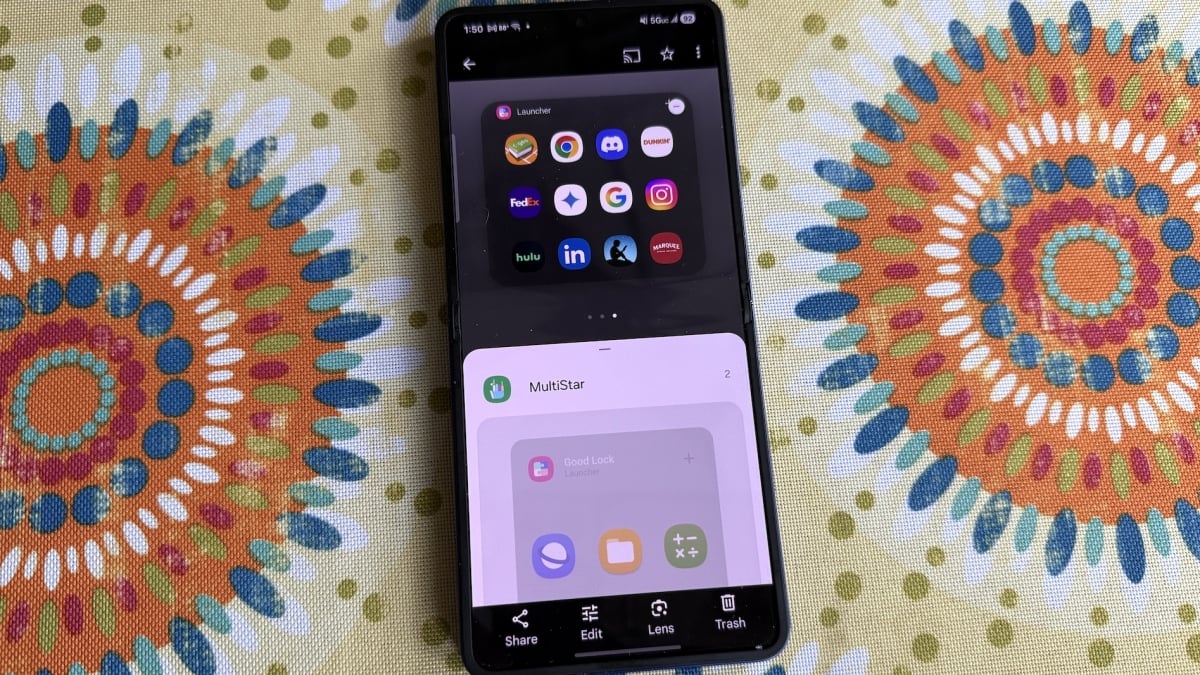



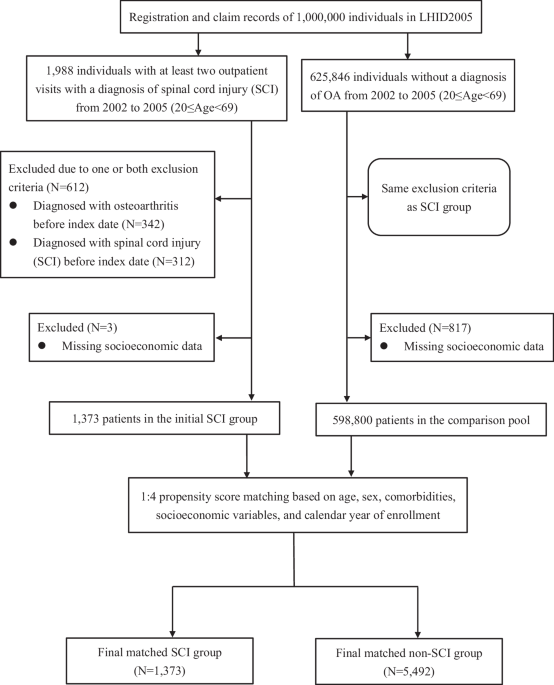
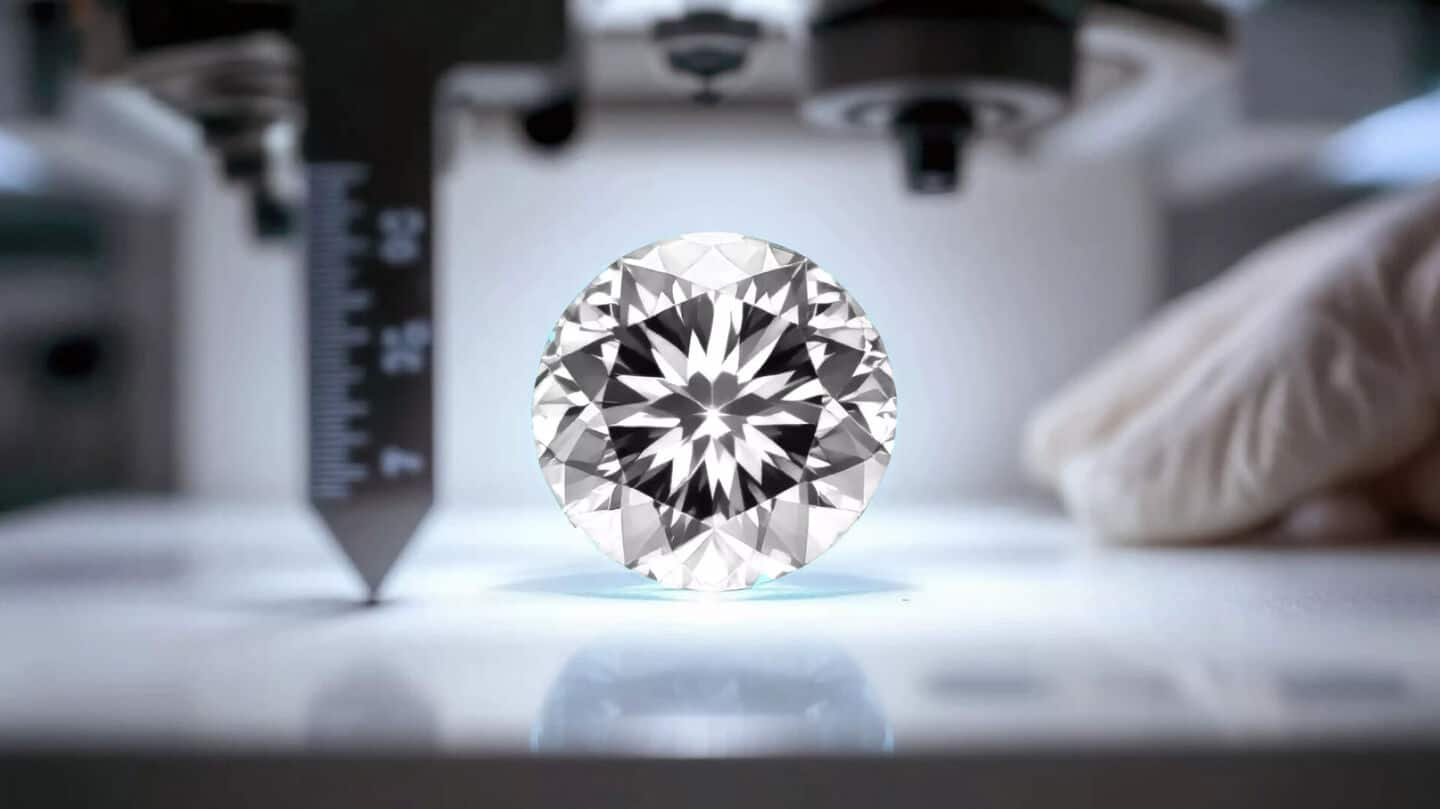








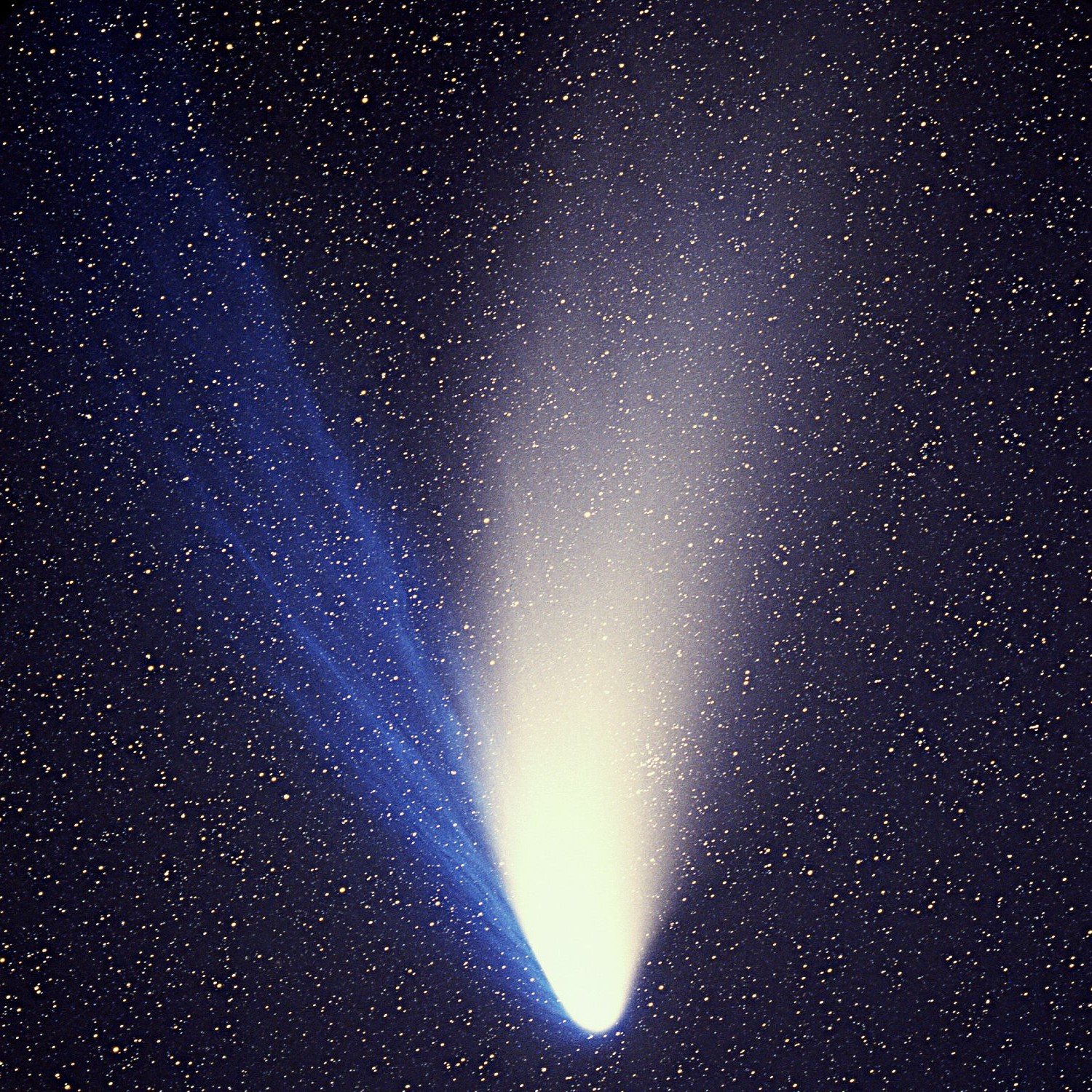 Comets in our Solar System are a familiar sight. An image of comet C/1995 O1 (Hale-Bopp), taken on April 04, 1997 with a 225mm f/2.0 Schmidt Camera (focal length 450mm) on Kodak Panther 400 color slide film with an exposure time of 10 minutes; the field shown is about 6.5°x6.5°; at full resolution, the stars in the image appear slightly elongated, as the camera tracked the comet during the exposure (Credit : E. Kolmhofer, H. Raab; Johannes-Kepler-Observatory)
Comets in our Solar System are a familiar sight. An image of comet C/1995 O1 (Hale-Bopp), taken on April 04, 1997 with a 225mm f/2.0 Schmidt Camera (focal length 450mm) on Kodak Panther 400 color slide film with an exposure time of 10 minutes; the field shown is about 6.5°x6.5°; at full resolution, the stars in the image appear slightly elongated, as the camera tracked the comet during the exposure (Credit : E. Kolmhofer, H. Raab; Johannes-Kepler-Observatory) The Hubble Space Telescope as seen from the departing Space Shuttle Atlantis, flying STS-125, HST Servicing Mission 4 (Credit : NASA)
The Hubble Space Telescope as seen from the departing Space Shuttle Atlantis, flying STS-125, HST Servicing Mission 4 (Credit : NASA)